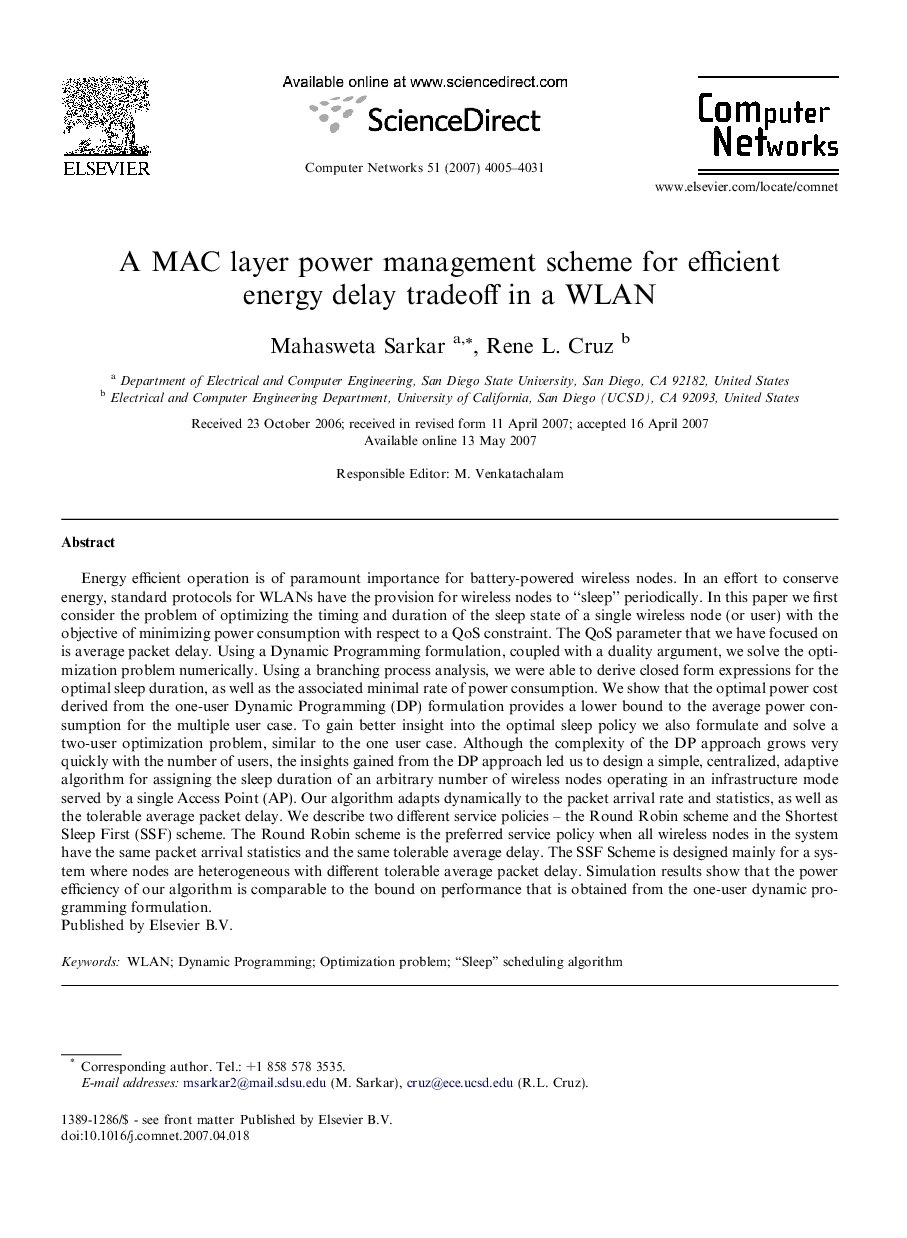| Article ID | Journal | Published Year | Pages | File Type |
|---|---|---|---|---|
| 453230 | Computer Networks | 2007 | 27 Pages |
Energy efficient operation is of paramount importance for battery-powered wireless nodes. In an effort to conserve energy, standard protocols for WLANs have the provision for wireless nodes to “sleep” periodically. In this paper we first consider the problem of optimizing the timing and duration of the sleep state of a single wireless node (or user) with the objective of minimizing power consumption with respect to a QoS constraint. The QoS parameter that we have focused on is average packet delay. Using a Dynamic Programming formulation, coupled with a duality argument, we solve the optimization problem numerically. Using a branching process analysis, we were able to derive closed form expressions for the optimal sleep duration, as well as the associated minimal rate of power consumption. We show that the optimal power cost derived from the one-user Dynamic Programming (DP) formulation provides a lower bound to the average power consumption for the multiple user case. To gain better insight into the optimal sleep policy we also formulate and solve a two-user optimization problem, similar to the one user case. Although the complexity of the DP approach grows very quickly with the number of users, the insights gained from the DP approach led us to design a simple, centralized, adaptive algorithm for assigning the sleep duration of an arbitrary number of wireless nodes operating in an infrastructure mode served by a single Access Point (AP). Our algorithm adapts dynamically to the packet arrival rate and statistics, as well as the tolerable average packet delay. We describe two different service policies – the Round Robin scheme and the Shortest Sleep First (SSF) scheme. The Round Robin scheme is the preferred service policy when all wireless nodes in the system have the same packet arrival statistics and the same tolerable average delay. The SSF Scheme is designed mainly for a system where nodes are heterogeneous with different tolerable average packet delay. Simulation results show that the power efficiency of our algorithm is comparable to the bound on performance that is obtained from the one-user dynamic programming formulation.
